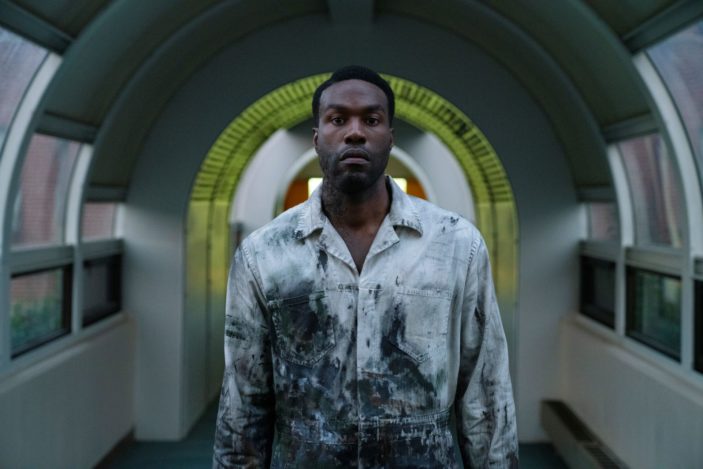
When it comes to cinematic boogeymen, the creation of Candyman is undoubtedly a frontrunner. Since first becoming the stuff of unnerving urban legend in Bernard Rose’s 1992 classic Candyman, the character itself has remained a figure of terror and now, just shy of three decades later, has been summoned once more for a new generation in Nia DaCosta‘s spiritual sequel.
Serving as a direct continuation of the original film, DaCosta and producer Jordan Peele (Get Out) have wisely framed the film as its own entity too. Though seeing the original assists in understanding the lore uncovered, DaCosta’s script – co-written with Peele and Win Rosenfeld (TV’s The Twilight Zone) – laces itself with organic exposition to tie itself to the first film without ever feeling like an over-explained sequel; additionally, in place of traditional flashbacks, the film implements sequences of shadow puppetry to storytell the original film’s events.
The thematics of racial injustice, police brutality and black trauma run rampant throughout Candyman, though it’s still aware that its political agenda shouldn’t overshadow its horrific inclinations. At the centre of the film is Anthony McCoy (Yahya Abdul-Mateen II), a “starving” artist who, after hearing the Candyman tale from his girlfriend’s brother (Nathan Stewart-Jarrett, providing the film with relatable touches of biting humour), finds himself inspired and overcome with clarity in his intention to artistically represent the brutal tale. Said girlfriend, Brianna (Teyonah Parris), a curator at a prestigious Chicago art gallery that has essentially given a leg up to Anthony, is supportive though a little hesitant in sharing his enthusiasm for artwork that is violently literal in its depiction.
Anthony’s investigation into the history of Candyman leads him to the Cabrini-Green projects, a former public housing project that has since been gentrified, and to learn of Helen Lyle (Virginia Madsen), a notorious figure who summoned and was subsequently possessed by Candyman. The legend, which Anthony learns further details of through local resident William Burke (Colman Domingo), comes with its own inviting hook in that if you say his name five times into a mirrored surface, he will appear and subsequently murder you. It’s the type of “white people shit” that Brianna and her brother know not to entertain, but Anthony being of inquisitive nature can’t help but chant, leading to the figure wreaking havoc on Anthony’s psyche.
Whilst the very idea of saying “Candyman” five times into your own reflection is enough of a terror-leaning gimmick to centre a horror film around, DaCosta has made sure her retelling is so much more. Audiences expecting traditional thrills and bloodshed may find themselves surprisingly disappointed that this 2021 incarnation is a more intelligent being. Yes, there’s violent sequences to satisfy that genre thirst, but the political commentary feels just as important, if not more so; one only needs to look at the fact that the displayed victims are only caucasian people as an indication into the specificity of DaCosta’s critique.
In her own expansion on the mythos of Candyman being a mere reflection of humanity’s own horrific nature, DaCosta has created something visually sumptuous and impressively important. Similar to the intelligence that Peele himself displays amongst his own horror renderings, DaCosta’s Candyman may not possess the simplistic thrills traditional audiences expect, but in continuing the genre’s exploration of aptitude she has created a story worthy of being investigated and retold.
![]()
![]()
![]()
![]()
![]()
THREE AND A HALF STARS (OUT OF FIVE)
Candyman is screening in Australian cinemas from August 26th, 2021.
